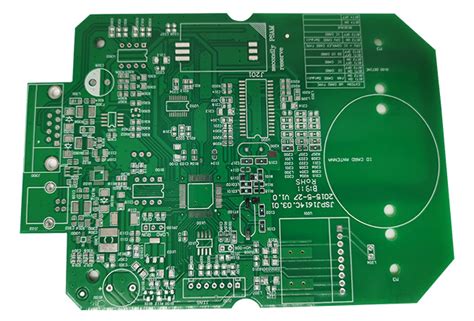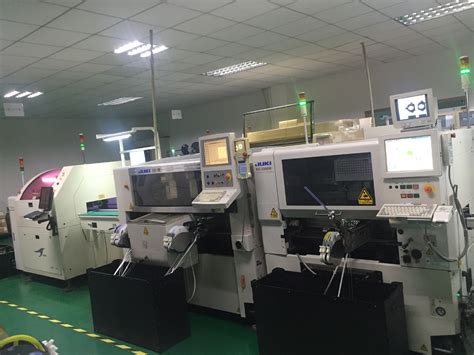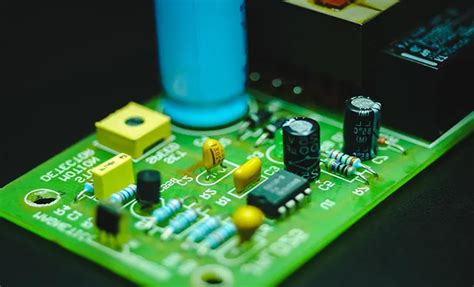Cheap PCB Assembly: Balancing Cost and Quality in Electronics Manufacturing
Introduction
Printed Circuit Board Assembly (PCBA) is a critical process in electronics manufacturing, where electronic components are mounted onto a PCB to create a functional circuit. As the demand for affordable electronic devices grows, manufacturers and businesses are increasingly seeking cheap PCB assembly services. However, achieving low-cost assembly without compromising quality is a complex challenge. This article explores the factors that influence the cost of PCB assembly, strategies for reducing costs, and how to balance affordability with reliability and performance.
1. Understanding PCB Assembly Costs
The cost of PCB assembly depends on several factors, including design complexity, component selection, production volume, and the choice of assembly service provider. Understanding these factors is essential for identifying opportunities to reduce costs.
1.1 Key Cost Drivers in PCB Assembly
- Design Complexity: Complex designs with high-density interconnects, multi-layer PCBs, and fine-pitch components increase assembly costs.
- Component Costs: The price of electronic components varies widely depending on their type, quality, and availability.
- Production Volume: Higher volumes typically reduce per-unit costs due to economies of scale.
- Assembly Technology: Surface Mount Technology (SMT) is generally cheaper than Through-Hole Technology (THT) for high-volume production.
- Testing and Quality Control: Rigorous testing and inspection processes add to the overall cost but are essential for ensuring quality.
- Turnaround Time: Expedited production and shipping services increase costs.
1.2 Hidden Costs in Cheap PCB Assembly
While cheap PCB assembly services may seem attractive, they can sometimes lead to hidden costs, such as:
- Poor Quality: Low-cost providers may cut corners, resulting in defective products and costly rework.
- Component Shortages: Inadequate inventory management can lead to delays and higher costs.
- Lack of Support: Cheap services may offer limited customer support, making it difficult to resolve issues.
2. Strategies for Reducing PCB Assembly Costs
2.1 Optimize PCB Design
A well-optimized PCB design can significantly reduce assembly costs. Consider the following design tips:
- Simplify the Layout: Reduce the number of layers and avoid unnecessary complexity.
- Standardize Components: Use commonly available components to avoid high procurement costs.
- Minimize Component Count: Fewer components mean lower assembly and material costs.
- Design for Manufacturability (DFM): Ensure the design is compatible with standard assembly processes.
2.2 Choose the Right Assembly Technology
The choice between SMT and THT can impact costs:
- SMT: Ideal for high-volume production and compact designs. SMT components are generally cheaper and easier to assemble.
- THT: Suitable for low-volume production or applications requiring high mechanical strength. THT assembly is more labor-intensive and costly.
2.3 Leverage Economies of Scale
Higher production volumes reduce per-unit costs by spreading fixed costs (e.g., setup and tooling) over more units. Consider consolidating orders or partnering with other businesses to increase volume.
2.4 Source Components Strategically
Component costs can account for a significant portion of the total assembly cost. Strategies to reduce component costs include:
- Bulk Purchasing: Negotiate discounts for large orders.
- Alternative Components: Use equivalent components that are more affordable or readily available.
- Local Suppliers: Reduce shipping costs and lead times by sourcing components locally.
2.5 Partner with a Reliable Assembly Service Provider
Choosing the right assembly service provider is crucial for achieving cost-effective PCB assembly. Look for providers that offer:
- Competitive Pricing: Transparent pricing with no hidden fees.
- High-Quality Standards: Certifications like ISO 9001 and IPC-A-610 ensure quality.
- Efficient Processes: Advanced machinery and automation reduce labor costs.
- Scalability: Ability to handle both small and large production runs.
3. Risks of Cheap PCB Assembly
While cost reduction is important, it should not come at the expense of quality and reliability. Cheap PCB assembly services may pose several risks:
3.1 Poor Workmanship
Low-cost providers may lack the expertise or equipment to produce high-quality assemblies, leading to defects such as:
- Solder Bridges: Short circuits caused by excess solder.
- Tombstoning: Components standing upright due to uneven solder paste.
- Cold Solder Joints: Weak connections caused by insufficient heat.
3.2 Component Quality Issues
Cheap services may use low-quality or counterfeit components, which can compromise the performance and reliability of the final product.
3.3 Lack of Testing and Inspection
Skipping or minimizing testing and inspection processes can result in defective products reaching the market, leading to costly recalls and reputational damage.
3.4 Delays and Communication Issues
Low-cost providers may have limited resources, leading to delays, poor communication, and difficulty resolving issues.
4. How to Balance Cost and Quality
Achieving cheap PCB assembly without sacrificing quality requires a strategic approach. Here are some tips for balancing cost and quality:
4.1 Set Clear Requirements
Clearly define your project requirements, including design specifications, quality standards, and budget constraints. This helps the assembly provider deliver a solution that meets your needs.
4.2 Prioritize Quality Over Cost
While cost is important, quality should not be compromised. Investing in a reliable assembly service provider may save money in the long run by reducing defects and rework.
4.3 Request Quotes from Multiple Providers
Compare quotes from multiple assembly service providers to find the best balance of cost and quality. Be sure to evaluate their capabilities, certifications, and customer reviews.
4.4 Opt for Prototyping
Before committing to mass production, order prototypes to test the design and assembly quality. This helps identify and address issues early in the process.
4.5 Monitor the Production Process
Stay involved throughout the production process to ensure quality standards are met. Regular communication with the assembly provider can help resolve issues quickly.
5. Emerging Trends in Low-Cost PCB Assembly
5.1 Automation and Industry 4.0
The integration of automation, IoT, and AI is reducing labor costs and improving efficiency in PCB assembly. Smart factories use real-time data to optimize production processes and minimize waste.
5.2 Online PCB Assembly Services
Online platforms are making it easier and more affordable to access PCB assembly services. These platforms offer instant quotes, design reviews, and transparent pricing.
5.3 Modular and Open-Source Designs
Modular designs and open-source hardware are reducing development costs and enabling faster prototyping. These approaches allow businesses to leverage existing designs and components.
5.4 Localized Manufacturing
Localized manufacturing reduces shipping costs and lead times, making it a cost-effective option for businesses in certain regions.
5.5 Sustainable Practices
Sustainable practices, such as using lead-free solder and recycling materials, are becoming more common. These practices not only reduce environmental impact but can also lower costs in some cases.
6. Choosing the Right Cheap PCB Assembly Service
When selecting a cheap PCB assembly service, consider the following factors:
6.1 Experience and Expertise
Choose a provider with experience in your industry and the specific type of assembly you require.
6.2 Quality Certifications
Look for certifications like ISO 9001 and IPC-A-610, which indicate adherence to quality standards.
6.3 Customer Reviews
Read customer reviews and testimonials to gauge the provider’s reliability and performance.
6.4 Pricing Transparency
Ensure the provider offers transparent pricing with no hidden fees.
6.5 Customer Support
A responsive and supportive team can make the assembly process smoother and more efficient.
Conclusion
Cheap PCB assembly is a viable option for businesses looking to reduce costs while maintaining quality and reliability. By optimizing design, leveraging economies of scale, and partnering with a reliable assembly service provider, businesses can achieve affordable PCB assembly without compromising performance. However, it is essential to balance cost with quality and be aware of the risks associated with low-cost services. As the electronics industry continues to evolve, emerging trends such as automation, online services, and sustainable practices are making cheap PCB assembly more accessible and efficient. By staying informed and making strategic decisions, businesses can successfully navigate the challenges of low-cost PCB assembly and bring high-quality electronic products to market.







